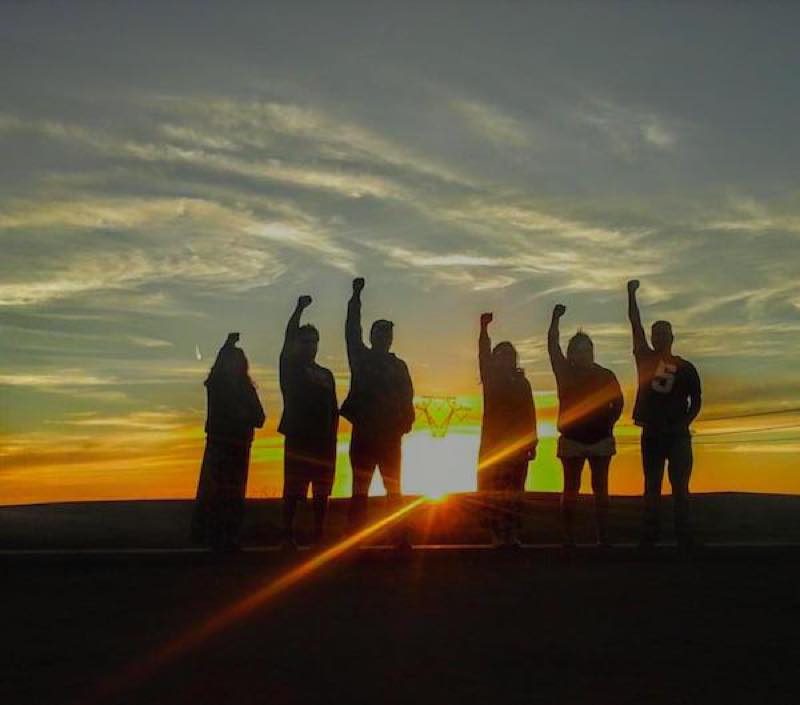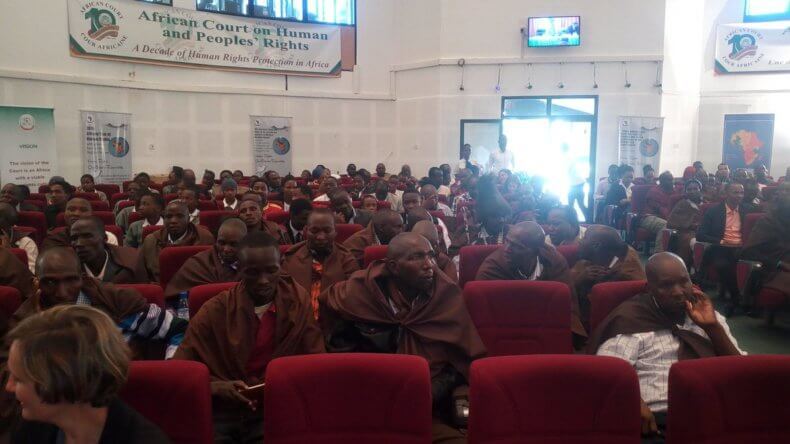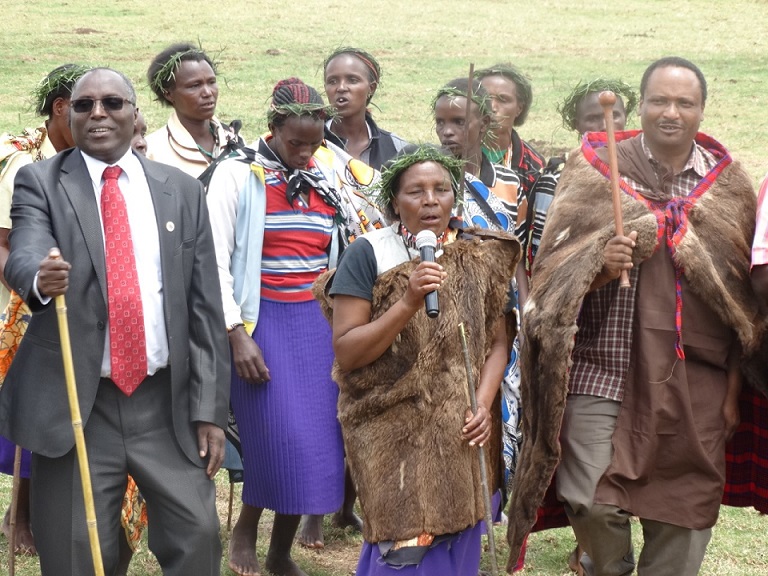by Deep Green Resistance News Service | Jun 23, 2017 | Lobbying
by Center for Biological Diversity
SAN FRANCISCO— Conservationists sued the U.S. Department of Agriculture’s Wildlife Services program today over its outdated wildlife-killing plan for Northern California.
The lawsuit, filed in San Francisco federal court, seeks an updated environmental analysis of the program’s killing of native wildlife including coyotes, bobcats and foxes.
“Wildlife Services’ cruel killing practices are ineffective, environmentally harmful and totally out of touch with science,” said Collette Adkins, a Center for Biological Diversity attorney representing the conservation groups involved in the lawsuit. “It’s long past time that Wildlife Services joined the 21st century and updated its practices to stop the mass extermination of animals. Nonlethal methods for dealing with human-wildlife conflicts have been shown to work. We have no choice but to sue the agency and force a closer look at those alternatives.”
Wildlife Services is a multimillion-dollar federal program that uses painful leghold traps, strangulation snares, poisons and aerial gunning to kill wolves, coyotes, cougars, birds and other wild animals — primarily to benefit the agriculture industry.
Last year the program reported that it killed 1.6 million native animals nationwide, including 3,893 coyotes,142 foxes, 83 black bears, 18 bobcats and thousands of other creatures in California. Nontarget animals — including protected wildlife like wolves, Pacific fisher and eagles — are also at risk from Wildlife Services’ indiscriminate methods.
“Killing native wildlife at the behest of the ranching industry is morally unconscionable and scientifically unsound,” said Erik Molvar of Western Watersheds Project. “Carnivores play an important ecological role, and exterminating them upsets the balance of nature. We should leave the wildlife alone and change ranching practices instead.”
“Wildlife Services is acting in clear violation of the law,” said Tara Zuardo, Animal Welfare Institute wildlife attorney. “The agency cannot be allowed to continue haphazardly and cruelly kill thousands of wild animals in Northern California each year without weighing more humane alternatives.”
The National Environmental Policy Act (NEPA) requires Wildlife Services to rigorously examine the environmental effects of killing wildlife and to consider alternatives that rely on proven nonlethal methods to avoid wildlife conflicts. But the wildlife-killing program’s environmental analysis for Northern California is more than 20 years old. According to the complaint filed today, Wildlife Services must use recent information to analyze the impacts of its wildlife-killing program on the environment and California’s unique wild places.
“NEPA requires that federal agencies use the best available science in analyzing the impacts of their programs, and we believe Wildlife Services has failed to do this and has in fact cherry-picked their science to meet their goals,” stated Camilla Fox, founder and executive director of Project Coyote. “Moreover, they must consider alternatives to indiscriminate killing and analyze the site-specific and cumulative impacts that killing large numbers of wild animals has on the diversity and integrity of healthy ecosystems.”
Today’s lawsuit is brought by the Center for Biological Diversity, Western Watersheds Project, the Animal Legal Defense Fund, Project Coyote, the Animal Welfare Institute and WildEarth Guardians. It targets Wildlife Services’ program in California’s North District, which includes Butte, Humboldt, Lassen, Mendocino, Modoc, Nevada, Plumas, Sierra, Shasta, Siskiyou, Sutter, Trinity and Yuba counties.

by Deep Green Resistance News Service | Jun 15, 2017 | Lobbying
Featured image by Lucas Reynolds. Judge James Boasberg’s 91-page decision says U.S. Army Corps ‘did not adequately consider’ oil spill impacts; no ruling on whether to keep DAPL operational
The U.S. Army Corps of Engineers violated the law in its fast-tracked approval of the Dakota Access Pipeline (DAPL), a U.S. District Court Judge in Washington D.C. has ruled. Judge James Boasberg said the Corps did not consider key components of the National Environmental Policy Act (NEPA) in granting the Lake Oahe easement under the Missouri River when directed to do so by President Donald Trump shortly after his swearing-in.
The Standing Rock Sioux Tribe, with the Cheyenne River Sioux as interveners, had challenged the approval on the grounds that adequate environmental study had not been conducted. Boasberg agreed on many points, though he did not rule on whether the pipeline should remain operational. It has been carrying oil since June 1.
“Although the Corps substantially complied with NEPA in many areas, the Court agrees that it did not adequately consider the impacts of an oil spill on fishing rights, hunting rights, or environmental justice, or the degree to which the pipeline’s effects are likely to be highly controversial,” Boasberg said in his 91-page decision. “To remedy those violations, the Corps will have to reconsider those sections of its environmental analysis upon remand by the Court. Whether Dakota Access must cease pipeline operations during that remand presents a separate question of the appropriate remedy, which will be the subject of further briefing.”
A status conference will be held next week, according to the environmental law firm EarthJustice, which is representing the tribes in this case. Energy Transfer Partners, the pipeline’s builders, did not respond to requests for comment by press time.
“This is a major victory for the Tribe and we commend the courts for upholding the law and doing the right thing,” said Standing Rock Sioux Chairman Dave Archambault II in a statement. “The previous administration painstakingly considered the impacts of this pipeline and President Trump hastily dismissed these careful environmental considerations in favor of political and personal interests. We applaud the courts for protecting our laws and regulations from undue political influence, and will ask the Court to shut down pipeline operations immediately. ”
The fight over the 1,172-mile-long pipeline that runs hotly contested through four states has been the source of controversy since it was first proposed. The Standing Rock Sioux Tribe became the flashpoint for the issue when thousands of water protectors and hundreds of tribes gathered at camps along the Missouri River over the summer of 2016. They were protesting the routing of the pipeline through treaty lands—especially in light of the fact that it had been rerouted from more affluent Bismarck for the same reason the tribe didn’t want it nearby, because of the danger to drinking water—in a conflict that involved a militarized police force.
“This decision marks an important turning point. Until now, the rights of the Standing Rock Sioux Tribe have been disregarded by the builders of the Dakota Access Pipeline and the Trump Administration—prompting a well-deserved global outcry,” said Earthjustice attorney Jan Hasselman in a statement. “The federal courts have stepped in where our political systems have failed to protect the rights of Native communities.”

by Deep Green Resistance News Service | Jun 2, 2017 | Lobbying
Featured image: The Ogiek preparing to receive the African Court’s landmark decision after awaiting close to a decade. Photo: Andrew Songa on twitter @drewfremen
by Venatrix Fulmen / ECOTERRA Intl. via Intercontinental Cry
The
African Court on Human and Peoples Rights, at its 45
th session on May 26, 2017 in Arusha, Tanzania, delivered a long-awaited and unanimous judgment against the Kenya government in a case brought before it by the Ogiek Indigenous Peoples.
The African Commission on Human and Peoples Rights had filed the case after the applicant proved consistent violations and the denial of the human and land rights of the Ogiek by the Republic of Kenya.
In November 2009, when the Kenyan Forest Service (KFS) delivered a potentially fatal blow against the Ogiek with the designation of an eviction order in October 2009 against the Ogiek and anyone else within the Mau Forest Complex–the ancestral homeland of the Ogiek–within 30 days, the African Court had issued an order to suspend the implementation of the eviction notice.
In March 2013, the African Court issued additional provisional measures requiring the Kenyan Government to stop any land transactions in the Mau Forest and refrain from taking any action that would harm the case, until a decision had been reached. This order, however, has never been respected by the Kenyan state.
After dismissing the numerous objections of the government of Kenya, the African Court delivered in Arusha a comprehensive judgement and a very clear ruling, read out over almost 2 hours by Hon. Justice Agustino Ramadani, the former President of the African Court.
The court found that the government of the Republic of Kenya illegally evicted members of the Ogiek community from the Mau Forest and has continuously violated the rights of the Ogiek under Articles 1, 2, 8, 14, 17 (2/3), 21 and 22 of the African Charter on Peoples and Human Rights.
The Republic of Kenya given 6 months to implement required remedies
Concerning the demand for reparations and compensation, the Ogiek have 90 days to file an application and the Kenya state has 90 days to respond to the demands. After this period, the African Court will rule on the reparations to be awarded to the Ogiek community and its victims of abusive state power.
The ruling has been widely welcomed as a fair and just decision by the Ogiek and ECOTERRA Intl., an organization that has stood by the Ogiek since 1986, as well as other important supporters including Friends of Peoples close to Nature (fPcN-interCultural), Minority Rights International and CEMIRIDE.
This article was originally published by ECOTERRA Intl. It has been edited for Intercontinental Cry under a Creative Commons Non-Commercial Share-Alike License.

by Deep Green Resistance News Service | May 31, 2017 | Mining & Drilling, Protests & Symbolic Acts
by Barriere Lake Solidarity
When: Thursday, June 1st, 4:15pm
Where: 65 Queen Street West, 8th floor, Toronto
Join us for a flash rally outside of the Annual General Meeting of Copper One – a mining company that has been relentlessly pursuing a claim on Barriere Lake’s land despite firm and repeated refusals by the community.
Community members will be driving to Toronto from Barriere Lake to attend the meeting and tell them there is no possible way they will ever get community consent to drill on Barriere Lake’s unceded Algonquin territory. Just like they’ve been doing since 2011.
The company’s claim covers a large area of the La Vérendrye wildlife reserve and a neighbouring area including the headwaters of the Ottawa River.
In spite of a government decision to suspend the company’s mining claims earlier in 2017, Copper One has repeatedly stated its intention to begin exploratory drilling on the territory of the Algonquins of Barriere Lake.
The Algonquins of Barriere Lake have consistently refused mining exploration on the territory claimed by Copper One. This traditional and current-use territory of the community has been subject to agreements between the community and the governments of Quebec and Canada concerning the joint management of renewable resources, namely the Trilateral Agreement of 1991 and the Bilateral aggreement of 1998. The community has accepted some forms of development on this territory, but has repeatedly stated that mining is not acceptable.
The community objects to the Quebec’s Mining Act’s failure to require consultation with indigenous nations. The Mining Act also fails to allow integrated land use planning in respect of indigenous peoples’ rights and aspirations, including the possibility of saying “no” to mining claims located in culturally or ecologically sensitive areas.

by Deep Green Resistance News Service | May 23, 2017 | Lobbying
by Minority Rights Group International
The African Court on Human and Peoples Rights, at its 45th session on 26 May 2017 in Arusha, will deliver a long-awaited judgment on a case brought before it, by the Ogiek indigenous peoples against the Kenyan government, for consistent violations and denial of their land rights.
‘This case is of fundamental importance for indigenous peoples in Africa, and particularly in the context of the continent-wide conflicts we are seeing between communities, sparked by pressures over land and resources,‘ says Lucy Claridge, Minority Rights Group International’s (MRG) Legal Director. ‘Ultimately the Court will be ruling on the crucial role of indigenous peoples in the conservation of land and natural resources, and consequently, the mitigation of climate change in a region currently ravaged by drought and famine.’
The Ogiek, 35, 000 of whom are the victims in this landmark case, live in the Mau Forest Complex in the Rift Valley of Kenya. They are one of the last remaining forest-dwelling communities and among the most marginalised indigenous peoples in Kenya. They allege eight violations of their rights to life, property, natural resources, development, religion and culture by the Kenyan government under the African Charter on Human and Peoples’ Rights, to which Kenya is a signatory.
This is the first time the African Court, in operation since 2006, will rule on an indigenous peoples’ rights case and is by far the largest ever case brought before the Court. It was originally lodged with the African Commission on Human and Peoples’ Rights, but was referred for the first time in history to the Court on the basis that it evinces serious and mass human rights violations. MRG, Ogiek Peoples’ Development Program (OPDP) and CEMIRIDE were the three original Complainants before the African Commission.
‘This judgment will be a huge milestone for the Ogiek community. We are optimistic that it will be positive, and crucially, that it will be respected by the Kenyan government, including implementation, so that Ogiek can feel complete and enjoy all the basic rights like every other Kenyan,’ says Daniel Kobei, Executive Director of OPDP.
The case was heard by the Court in November 2014. MRG delivered an oral intervention on behalf of the original Complainants, whilst two Ogiek community members and other expert witnesses gave testimony. MRG supported 25 Ogiek community members to attend the hearing, and supported a further 40 to view the hearing in Kenya via a live stream from the Court.
In March 2013, the African Court issued a provisional measures order requiring the Kenyan Government to stop land transactions in the Mau Forest and refrain from taking any action which would harm the case, until it had reached a decision. This order unfortunately has not been respected.
For decades the Ogiek have been routinely subjected to arbitrary forced evictions from their ancestral land in the Mau Forest by the government, without consultation or compensation. This has had a detrimental impact on the pursuit of their traditional lifestyle, religious and cultural life, access to natural resources and their very existence as an indigenous people. The Ogiek have a spiritual, emotional and economic attachment to the forest. They rely on it for food, shelter and identity.
Learn more
For more information please contact:
Lucy Claridge, MRG Legal Director (English, French)
M: +44 (0) 7866 741922
E: lucy.claridge@mrgmail.org
Kanyinke Sena, MRG Kenya Advocacy Officer (English, Swahili)
M: +254 725288402
E: kanyinke.sena@mrgmail.org
Daniel Kobei, Ogiek Peoples’ Development Program Executive Director (English, Swahili)
M: +254 722433757
T: +254 512213803
E: dkobei@yahoo.com / opdp@ogiekpeoples.org

by Deep Green Resistance News Service | May 19, 2017 | Lobbying
by Center for Biological Diversity
TUCSON, AZ— President Trump’s border wall threatens 93 endangered and threatened species, including jaguars, ocelots, Mexican gray wolves and cactus ferruginous pygmy owls, according to a new study by the Center for Biological Diversity.
The study also found that 25 threatened or endangered species have designated “critical habitat” on the border, including more than 2 million acres within 50 miles of the border.
“Trump’s border wall is a disaster for people and wildlife alike,” said Noah Greenwald, endangered species director at the Center. “It could drive magnificent species like the jaguar and ocelot to extinction in the United States.”
The new study identified all threatened, endangered and “candidate” species (those being considered for protection) that have ranges near or crossing the border. These include 57 endangered species, 24 threatened species, 10 species under consideration for protection and two species of concern, golden and bald eagles. Construction of Trump’s 1,200-mile wall — along with related infrastructure and enforcement — will have far-reaching consequences for wildlife, including cutting off migration corridors, reducing genetic diversity, destroying habitat, and adding vehicles, noise and lights to vast stretches of the wild borderlands.
“The border wall won’t be effective at stopping people seeking a better life from getting to this country, but it will destroy habitat and divide wildlife populations,” Greenwald said. “Building a wall across the entirety of the border would cause massive damage to one of the most biologically diverse regions in North America and would be a boondoggle of the highest order.”
The sections of border wall that have already been built have had a range of negative effects on wildlife, including direct destruction of thousands of acres of habitat, indirect impacts from noise and light pollution, and division of cross-border wildlife populations like bighorn sheep and jaguars. The border wall would cut through the Cabeza Prieta, Buenos Aires and several other national wildlife refuges, along with Organ Pipe Cactus National Monument, Big Bend National Park and many other natural areas that, besides acting as corridors for wildlife, are national treasures.
Last month the Center and Congressman Raúl M. Grijalva (D-Ariz.), the ranking member of the House Committee on Natural Resources, sued the Trump administration over the proposed border wall and other border security measures, calling on federal agencies to conduct an in-depth investigation of the proposal’s environmental impacts.
The suit, filed in the U.S. District Court for the District of Arizona, is the first targeting the Trump administration’s plan to vastly expand and militarize the U.S.-Mexico border, including construction of a “great wall.”





